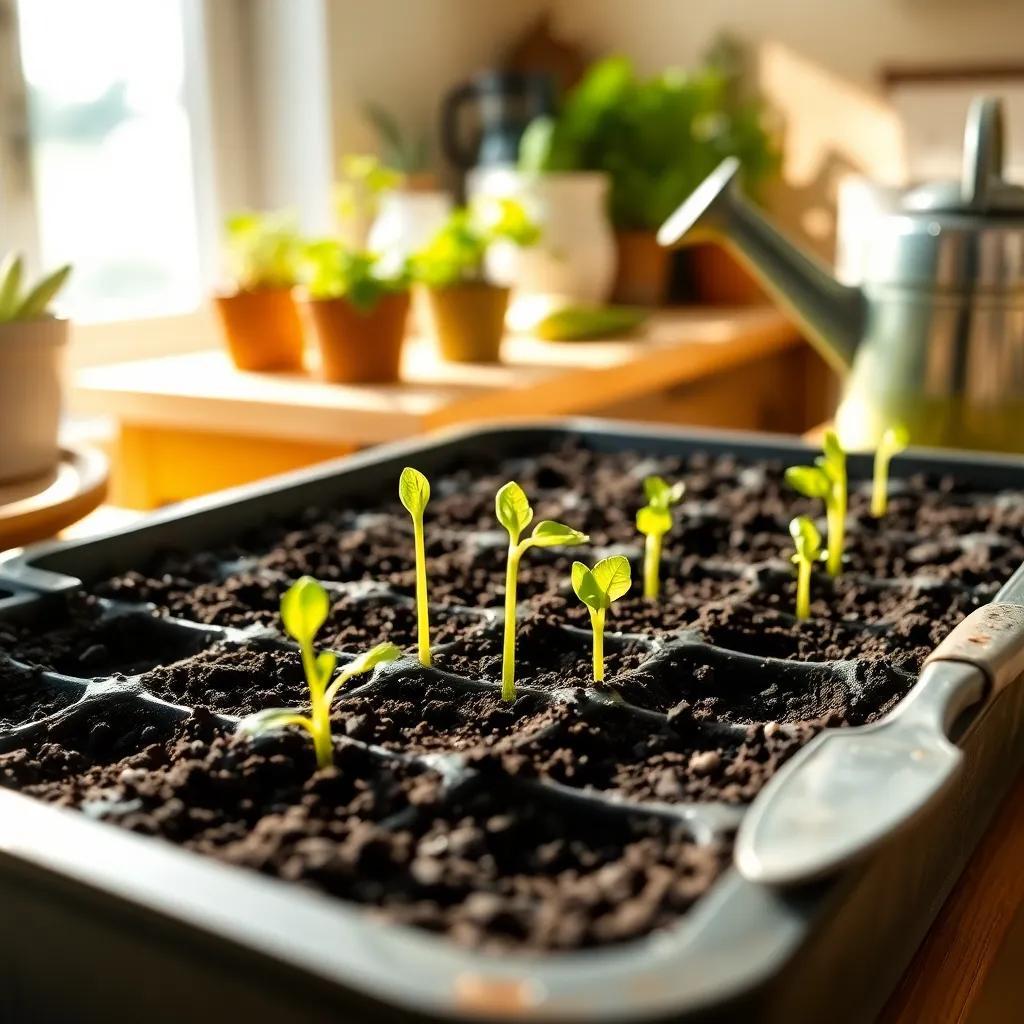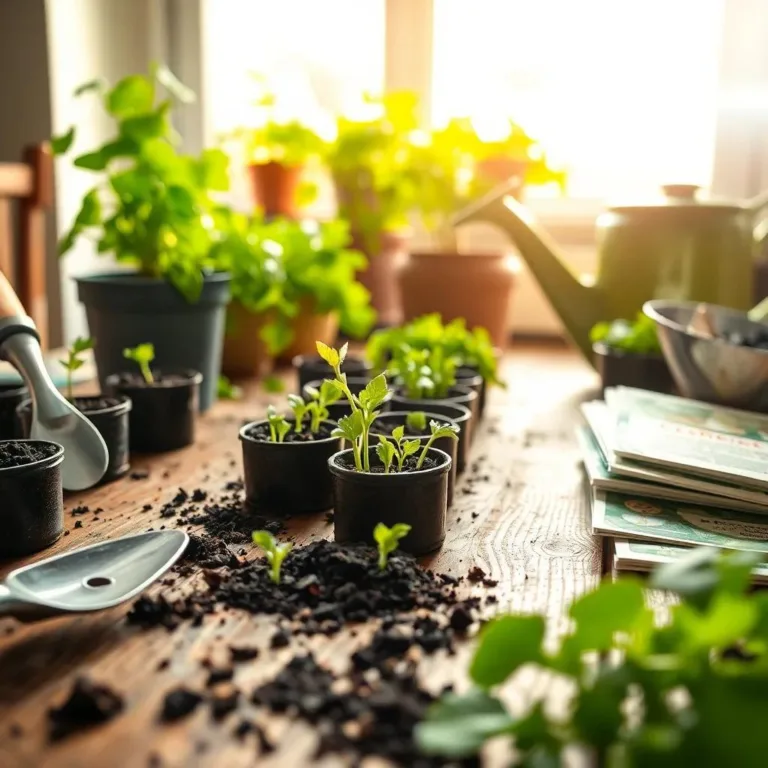Are you ready to grow your very own cucumbers? Gardening is such a joy, especially when you see those tiny seeds sprout into delicious veggies! In this article, I’ll share everything you need to know about cucumber seed germination, including the factors that influence it, the conditions they love, and how to troubleshoot common issues. Let’s get those seeds sprouting and make your garden thrive!
Factors Influencing Cucumber Seed Germination
When it comes to getting those delightful cucumber seeds to sprout, several factors play a role—like a team of superheroes working together to help your garden flourish! Let’s explore the key elements that influence cucumber seed germination.
- Temperature: Cucumber seeds love warmth! They perform best in a cozy temperature range of 70-90°F (21-32°C). If it’s too chilly, the seeds might take their sweet time to sprout, or worse, they may just give up altogether. So, if you live in a cooler area, consider starting your seeds indoors or using a heat mat!
- Moisture: Water is like magic for seeds. It wakes them up and gets the germination process going! Keep the soil moist but not soggy. Too much water can lead to rot, while too little can leave seeds feeling dry and lifeless. A gentle watering routine will do the trick!
- Seed Quality: Not all seeds are created equal. Using fresh, high-quality seeds from a reputable source is your best bet. Old or improperly stored seeds may have lower viability, which means they may not sprout at all. So, always look for seeds that are labeled as viable and healthy!
- Seed Depth: How deep you plant your seeds can affect how well they sprout. Aim for about 1 inch (2.5 cm) deep in the soil. If they’re too shallow, they might dry out; too deep, and they could struggle to break through the surface!
- Air Circulation: Think of air as your seeds’ best buddy. Proper air circulation can help prevent mold and diseases. Avoid overcrowding your seeds to give them space to breathe—and grow healthy!
By paying attention to these factors, you’ll create the perfect environment for your cucumber seeds. So, let’s roll up our sleeves and get those seeds sprouting!
Optimal Conditions for Successful Germination
Now that we know what influences cucumber seed germination, let’s talk about creating the optimal conditions for those little guys to thrive! Setting up a comfy space for your seeds can make all the difference in their journey to becoming delicious cucumbers!
- Temperature Control: As I mentioned, keeping seeds warm is super important. If you’re starting them indoors, choose a sunny windowsill or use a heat mat to maintain that cozy temperature range of 70-90°F (21-32°C). The warmer, the better!
- Maintain Moisture Levels: I like to check my soil daily. Make sure it’s moist but well-draining. If it’s too wet, it could lead to a soggy seed graveyard. Just lightly water the soil before planting and check it regularly!
- Choose the Right Soil: Use well-draining soil that’s rich in organic matter. This will provide nutrients to the seeds and proper drainage to prevent rot. I mix in a little compost to give my seeds a nutrient boost!
- Seed Placement: When planting, space the seeds out adequately. This prevents overcrowding and helps with air circulation. Think of it as giving each seed its own personal space!
- Light Requirements Post-Germination: While cucumber seeds don’t need light to germinate, once they sprout, they love sunlight! Once seedlings emerge, place them in an area with 12-16 hours of bright, indirect sunlight each day. You can also use grow lights if you’re starting them indoors!
By setting these conditions, you’re ensuring your cucumber seeds have everything they need to germinate successfully. And trust me, the sight of those little sprouts reaching for the sun will put a huge smile on your face! Happy gardening!

Steps to Promote Cucumber Seed Sprouting
Getting your cucumber seeds to sprout is like following a fun recipe, and I’m here to share the steps with you! By following these easy guidelines, you’ll be on your way to seeing those little green miracles pop up in no time.
- Prepare the Soil: Start by mixing your soil with some organic matter. This creates a rich environment for the seeds. I like to use compost or well-rotted manure. It’s a great way to give your seeds a nutrient boost!
- Get Fresh Seeds: Use high-quality cucumber seeds from a reliable source. Old seeds can be a bust, so always check the packaging for freshness and viability.
- Soak the Seeds (Optional): If you want to give your seeds a little extra help, soak them in room temperature water for a few hours. This can soften the seed coat and may speed up germination. Just remember to drain them well!
- Sow the Seeds: Plant your cucumber seeds about 1 inch deep in the prepared soil, spacing them out to give them room to grow. I usually drop in a few seeds in each spot, just in case some don’t sprout.
- Provide Consistent Care: Keep your soil moist but not soggy. Water gently daily or every other day. A little routine can make a big difference!
- Monitor Progress: Keep an eye on your seeds and ensure they’re in a warm place. If it gets a little cool, you can use a heating mat or move them to a sunnier spot.
By following these steps, you’ll create an inviting home for your cucumber seeds, and soon, you’ll be rewarded with lovely green sprouts!
Common Issues and Troubleshooting Tips
Even the most dedicated gardeners can run into hiccups along the way! If you notice something odd happening with your cucumber seeds, don’t worry! Here are some common issues and simple troubleshooting tips to help you get things back on track.
- Poor Germination: If your seeds aren’t sprouting, check if you’re using fresh seeds. If they’re old or damaged, they won’t germinate well. Make sure you’re also giving them the right temperature and moisture levels—sometimes, a little tweak is all they need!
- Damping-Off Disease: This sneaky fungal disease can cause seedlings to wilt and collapse. To avoid this, provide good air circulation and avoid overwatering. Try to keep the soil light and well-draining!
- Seed Rot: If your seeds are sitting in soggy soil, they could be on the fast track to rot city! Make sure your soil is draining well and stop watering so much. A drier soil can save the day.
- Delayed Germination: If your seeds seem to be taking forever, check the temperature. If it’s too cold, they might be sleeping longer than they should. Try to warm them up!
- Leggy Seedlings: If your seedlings are tall and wobbling, they’re probably not getting enough light. Make sure they receive 12-16 hours of bright, indirect sunlight every day! A good grow light can also do wonders.
By recognizing these common issues and taking simple steps, you’ll be able to troubleshoot effectively. Remember, gardening is all about learning and adjusting—every mistake is a chance to grow!
Germination Time for Different Cucumber Varieties
Now that we’ve covered how to promote and troubleshoot seed sprouting, let’s get into the exciting world of germination time for different cucumber varieties! Did you know that not all cucumbers sprout at the same pace? Here’s what I’ve learned about their varying timelines.
- Standard Varieties: Most cucumber seeds typically take about 7 to 10 days to germinate under ideal conditions. If you’re using standard varieties like the Marketmore or Straight Eight, you can usually expect those little green sprouts to pop up pretty quickly!
- Early Maturing Varieties: Some cucumber types, like the Pickling varieties, may germinate even faster! You might see those babies sprouting in just 5 to 7 days. So, if you’re looking for a speedy harvest, consider planting these!
- Heirloom and Specialty Varieties: On the flip side, certain heirloom or specialty cucumbers may take longer to germinate. They might need 10 to 14 days. Varieties like the Lemon Cucumber are beautiful but can be a bit slower to wake up!
- Temperature Influence: Remember, temperature can affect germination times significantly. If it’s cooler than the ideal range (70-90°F), it may take longer, so keep an eye on that thermostat!
- Tracking Progress: It’s always a good idea to note when you planted your seeds. That way, you can keep track of their sprouting speed. Just think of it as a little gardening diary!
Understanding the germination times for different types of cucumbers will help you plan your garden better. By selecting the right varieties and conditions, you’ll be on your way to enjoying fresh, homegrown cucumbers in no time! Happy gardening!

